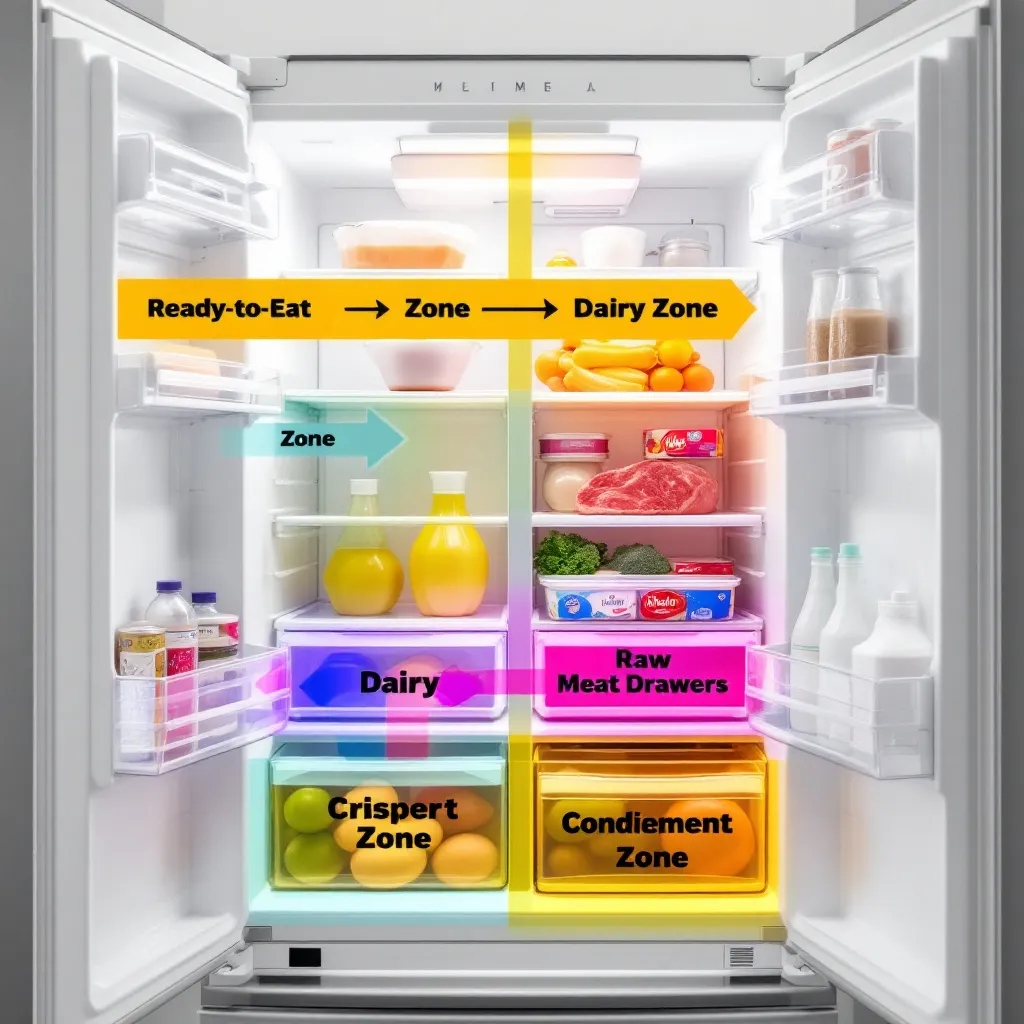
A fridge is more than just a storage space—it’s a critical tool for food safety. Placing food in the wrong zones can lead to issues like cross-contamination, improper temperatures, and food-borne illnesses.
Understanding refrigerator zones ensures that your ingredients stay fresh, properly organized, and free from contamination. In this Store Fresh guide, we’ll:
- Examine what food zones are in your fridge
- Explain how to store food based on temperature and humidity
- Provide actionable tips to create a safer and more efficient system
The Golden Rule: Mastering Refrigerator Safety Zones
The first step to a safer fridge is understanding the “top-to-bottom safety flow.”
Each shelf or drawer in your refrigerator serves a distinct purpose, and their placement corresponds to temperature and contamination risks. Here’s the golden rule you should always follow:
“Ready-to-Eat foods always go higher, raw meats always go lower”
Why Does This Matter?
- Gravity and Potential Drips: Liquids from raw meats or seafood may contain harmful bacteria like Salmonella or E. coli. Storing these items on the bottom shelf eliminates the risk of them dripping onto food below [1].
- Temperature Fluctuations: The fridge’s interior temperature isn’t uniform. Airflow, exposure to the door opening, and compressor cycles mean that some zones stay cooler than others [2].
Refrigerator Zones Explained: Top-to-Bottom Breakdown
The Top Shelves: The "Ready-to-Eat" Zone
- What Goes Here: Leftovers, pre-packaged meals, drinks, deli meats, and snack-friendly foods.
- Why: Ready-to-eat items don’t require further cooking, so keeping them above raw foods eliminates the risk of contamination.
The Middle Shelves: The "Dairy & Egg" Zone
- What Goes Here: Milk, yogurt, cheese, sour cream, and eggs.
- Why: These items benefit from consistent, colder conditions to prevent spoilage. Storing eggs in their original carton (and not the door) ensures freshness.
The Bottom Shelf: The "Safe Zone" for Raw Meat
- What Goes Here: Raw meats, poultry, fish, and any marinated items.
- Why: The bottom placement prevents potential juices from leaking onto other foods. Using a tray or container adds an extra layer of protection.
The Crisper Drawers: The Ideal Zones for Produce
- What Goes Here:
- High-Humidity Drawer: Leafy greens, carrots, and other vegetables that need moisture.
- Low-Humidity Drawer: Apples, berries, and other fruits that rot quickly in humid conditions.
Why: The right humidity settings keep produce fresher for longer. Refer to your manual to adjust humidity settings [6].
The Door: The Warmest Zone for Condiments
- What Goes Here: Sauces, dressings, jams, nut butters, and condiments.
- Why: These items contain preservatives that make them less vulnerable to temperature changes.
Organization Tips for a Safer, Stress-Free Fridge
Use Bins and Follow the FIFO Rule
Create a Kid-Friendly Snack Zone
Set Up an "Eat Me First" Box
Frequently Asked Questions
What is the safe zone for a refrigerator?
What are the food zones in a fridge?
Why should raw meat be stored on the bottom shelf?
Why can’t I store milk or eggs in the refrigerator door?
Which refrigerator drawer is high humidity?
Is it safe to put warm leftovers directly into the fridge?
How often should I clean my refrigerator?
What should go in the "Eat Me First" box?
Which foods should be stored in low-humidity crisper drawers?
Which is colder in a refrigerator, setting 1 or 7?
On most refrigerators, 7 is colder, but this can vary. Refer to your refrigerator manual to confirm how the settings correlate with temperature [8].
References
- USDA: Raw Meat Storage Guidelines. https://www.fsis.usda.gov/wps/wcm/connect/fsis-content
- FDA: Understanding Refrigerator Settings. https://www.fda.gov
- CDC: Preventing Cross-Contamination in the Kitchen. https://www.cdc.gov/foodsafety
- USDA: Egg Storage Best Practices. https://www.usda.gov
- FDA: Foodborne Illness Prevention. https://www.fda.gov/food
- GE Appliances: Crisper Drawer Humidity Settings. https://www.geappliances.com
- Love Food Hate Waste: FIFO Storage Tips. https://www.lovefoodhatewaste.com
